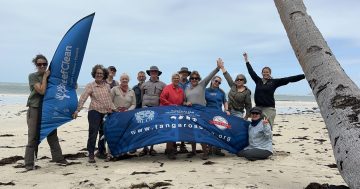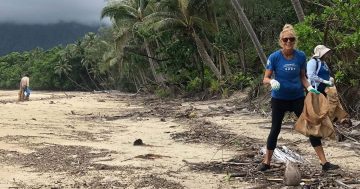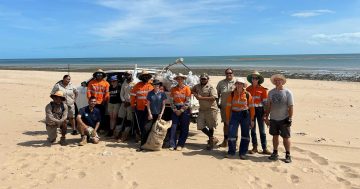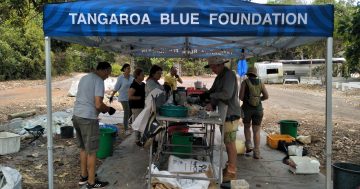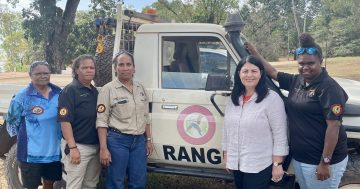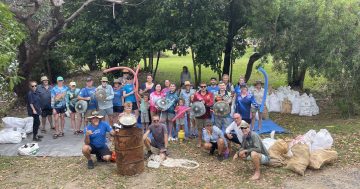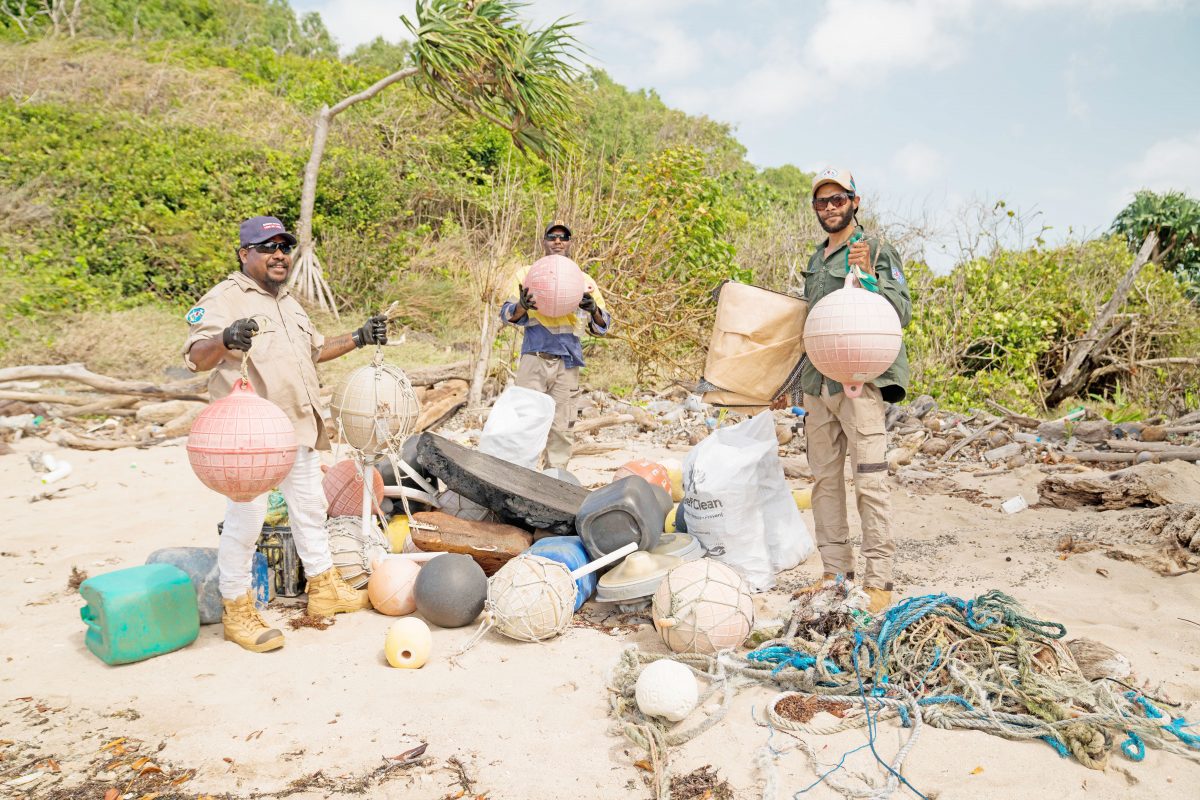
Jordan Solomon, Marco Wilson and Ashley Wilson clean up the beach. Picture: Gus Burrows | Styledia
MORE than 10 tonnes of marine debris has been removed from a Cape York beach that is so remote you need a helicopter to access it.
Last week, a team of 25 people, including volunteers, Elders and Traditional Owners were flown by helicopter to a remote beach on Wuthathi country on the east coast to pick up rubbish and record it.
The unique clean-up, which targeted almost three kilometres of coastline along Wuthathi Ngaachi (country) and Karakara (sea country), was one of the hundreds of clean-ups marine debris organisation Tangaroa Blue Foundation runs each year.
“Through our helicopter surveys over the past four years we could see marine debris piling up along the Cape York coastline between Cooktown and Horn Island, but given the remote location we were unable to get teams on the ground to remove it,” said Tangaroa Blue CEO Heidi Tait.
“Our usual boats and four-wheel drives were no match for this remote location, which has become a debris drain for plastic waste from around the world.
“But with the help of Heartland Helicopters (out of Weipa), we were able to reach, remove and record the waste in the Australian Marine Debris Initiative Database.”
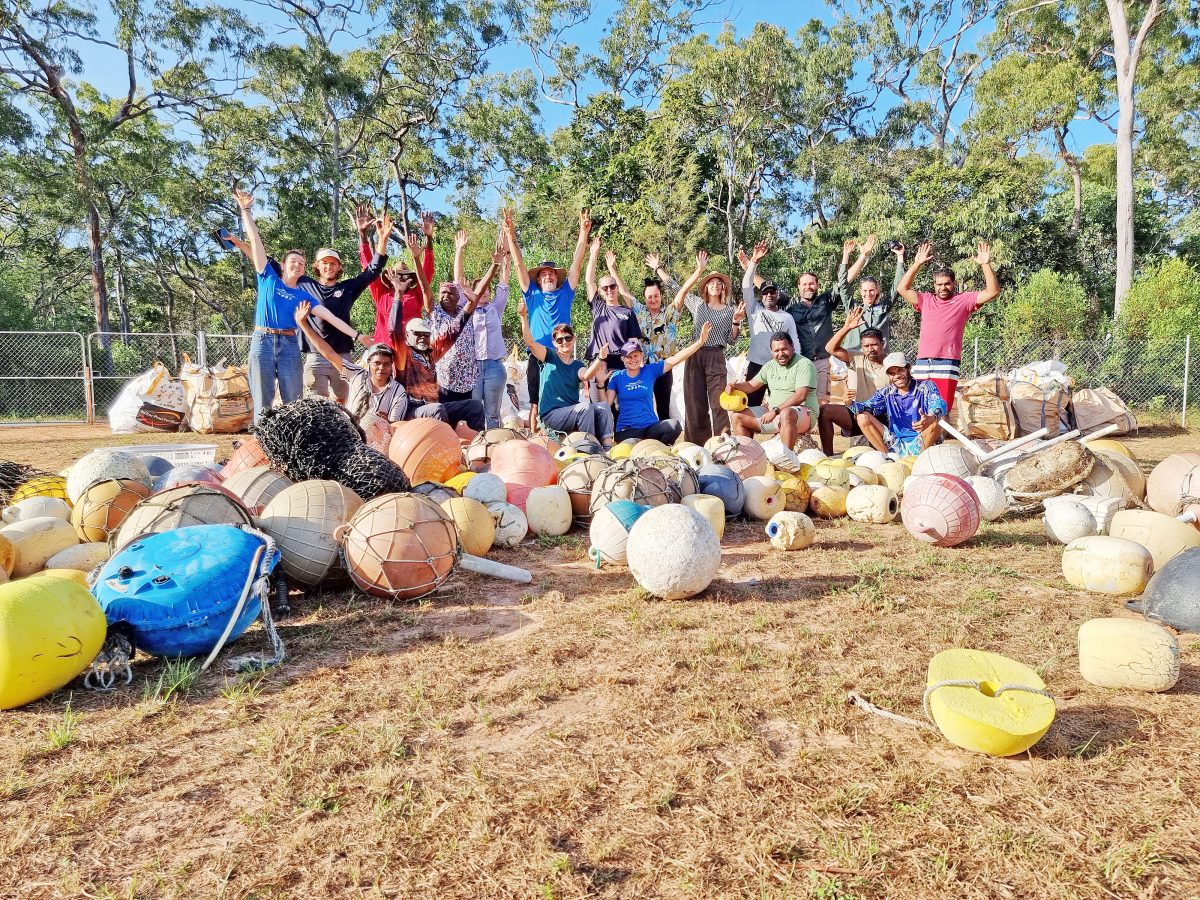
Volunteers celebrate after their huge clean-up effort. Picture: Gus Burrows | Styledia
Wuthathi custodian coordinator Clayton Enoch said the ranger base and associated equipment which supported the clean-up on country was completed in 2021 as part of the Wuthathi peoples’ fight for self-determination and return-to-country movement.
Wuthathi IPA Coordinator Sophie Holt said the project was a good example of the great environmental and cultural outcomes that can be achieved when First Nations Corporations and Indigenous Land and Sea programs were better supported and resourced.
The clean-up has helped implement the Wuthathi Healthy Country Plan, where marine debris is listed as a major threat to marine totems, islands, coastal ngaachi, reefs and seagrass beds.
The Wuthathi clean-up team removed more than 300,000 individual items, including thousands of plastic bottles, 1.3 tonnes of net and rope, 345 kilograms of commercial fishing beacons and six ghost nets.
Moira Macumboy, a member of the Wuthathi Tribal Elders Council said: “In our days our old people have been living on our country and on our beaches, they camp, and no rubbish was on our beach.
“But now, today, it is the modern world and there’s a lot of boats, fishing boats and big ships from overseas, they chuck all that mass of rubbish in the water and it all washes up on our beaches, that’s really sad.”
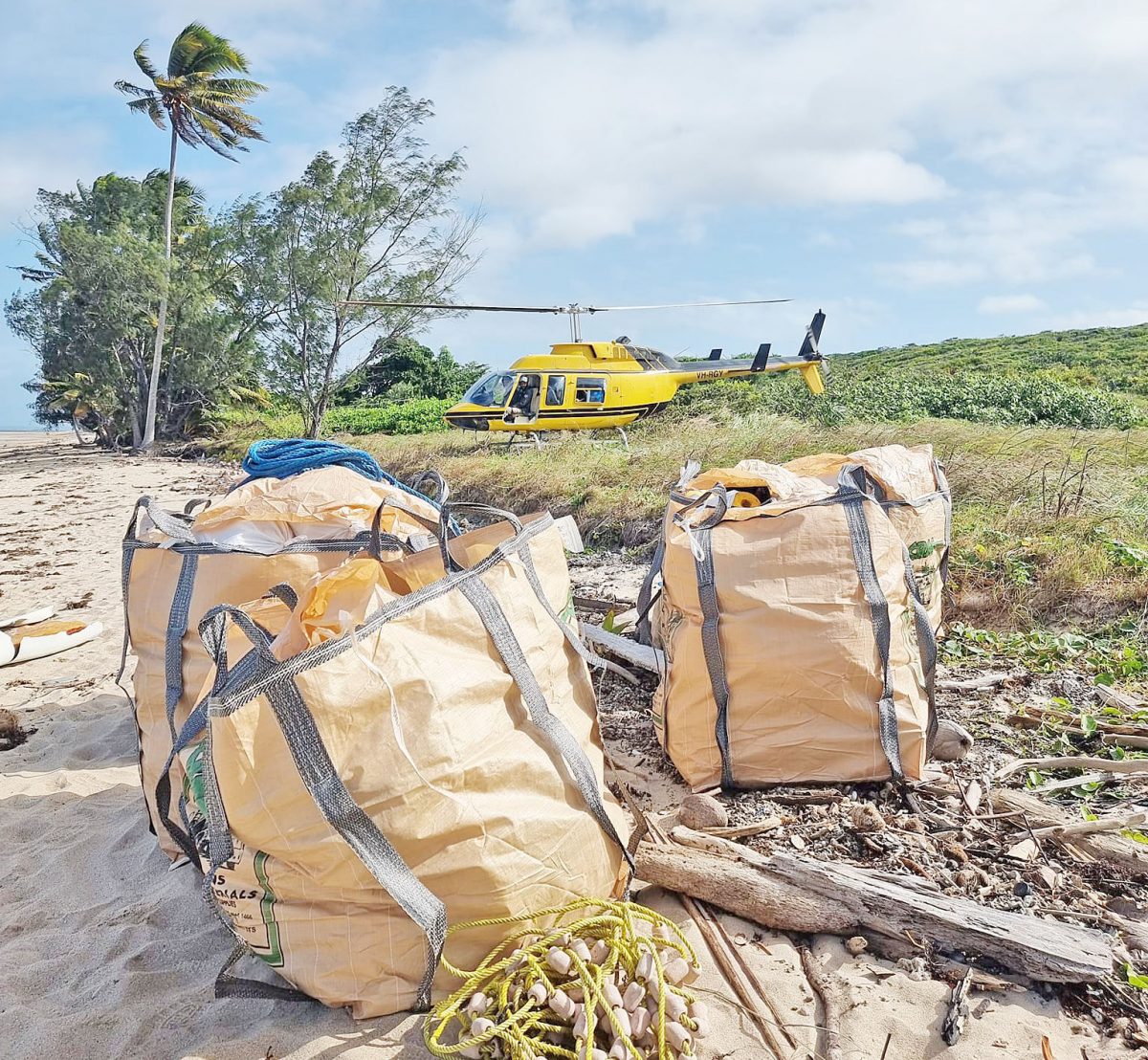
Ten tonnes of marine debris was removed by helicopter.
To help reduce and reuse plastic waste that litters our beaches, Tangaroa Blue uses a range of tools to analyse each item collected to identify opportunities for source reduction plans and further scientific understanding and conservation efforts.
With fishing litter dominating the debris in Cape York, the team was able to use handheld trinamiX spectrometers to identify plastics for Tangaroa Blue’s Rig Recycle program.
The program allows volunteers to instantly identify usable and recoverable plastics for processing and recycling.
“I would like to thank the Tangaroa Blue team, the Wuthathi Custodians, Elders and all those involved in delivering this record-breaking 10-tonne clean-up,” Ms Tait said.
The Cape York clean-up was made possible through the support of the Department of Climate Change, Energy, Environment and Water, Reef Trust, The Department of Agriculture, Fisheries and Forestry, Australian Border Force, Cape York NRM, Ocean Conservancy, Queensland Parks and Wildlife Service, BASF/TrinamiX and University of NSW.

The clean-up was held on a remote beach on the eastern coast of Cape York. Picture: Gus Burrows | Styledia


